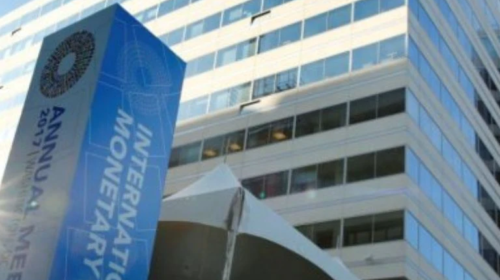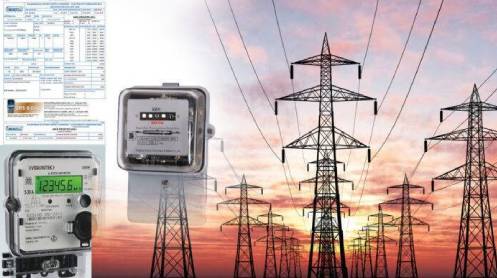On June 20, after multiple rounds of talks failed to produce a deal, crisis-hit Pakistan officially sought Washington’s help to get favorable treatment from the International Monetary Fund for a bailout from the country’s disastrous fiscal situation – at a potential price of tilting away from its relationship with China.
The request to the IMF came against the backdrop of rapidly falling foreign exchange reserves (less than US$9 billion), a free-falling rupee (Rs215:US$1) and China’s refusal to provide any additional financial help to what had previously been described as its “all-weather” friend. On top of an economy teetering towards bankruptcy is the rapidly increasing cost of living due to constantly rising oil/diesel prices as well as an electricity crisis, which is in many ways tied to the Chinese Independent Power Plants (IPPs) working in Pakistan.
Earlier in June, the IPPs refused to supply electricity unless Pakistan paid Rs340 billion (US$ 1.5 billion) up front. The cash-strapped government’s inability to pay more than Rs50 billion led the Chinese IPPs, which are a part of the China-Pakistan Economic Corridor (CPEC), to shut down their plants, causing massive electricity outages across Pakistan and putting the new government under enormous political pressure.
The shutdown happened despite major violations by – and even corruption of – Chinese companies involved in the electricity business. According to the 2021 report of the government-formed ‘Mohammad Ali committee,’ Chinese companies are openly defying the stipulated 15 percent maximum profit ratio and are making profit up to 50 to 60 percent, one key reason why electricity prices have been shooting up in Pakistan for the last few years.
This is yet another reason why the IMF has asked Pakistan to renegotiate the electricity rate with the Chinese IPPs to bring down the prices that consumers pay. The IMF has pushed Pakistan to renegotiate particularly because one of the fund’s key demands for releasing the agreed US$8 billion bailout package is to increase electricity prices. Since the Pakistani authorities are reluctant to increase the prices too much, the IMF has asked Pakistan to renegotiate with the Chinese IPPs to bring the overall cost of electricity down and reduce the circular debt.
As various official sources have revealed, Pakistan has not been able to pay the Rs340 billion to the Chinese because of IMF pressure not to pay without renegotiating the prices as well as the illegal profiteering.
The complexity surrounding the role of the IPPs as well as Pakistan’s negotiations with the IMF reflects the actual state of affairs between Pakistan and China on the one hand and Pakistan and the US on the other. Pakistan’s growing tilt towards the US, a direct outcome of the failure of the CPEC to generate the expected “win-win” growth for Pakistan – has led China to redefine its ties with Pakistan; hence, Beijing’s refusal to provide any additional loans.
The ‘CPEC backlash’ is not exclusive to Pakistan. In Nepal, for instance, dozens of Chinese companies involved in infrastructure and energy were recently banned for negligence and various malpractices. The Chinese, as usual, have blamed the new Nepalese government for all the troubles. Across much of the world, the Covid-19 crisis has impoverished governments, with as many as 30 Chinese policy banks, commercial banks, and companies lending to African companies or governments seeking to work out debt relief, which typically involves extending repayment periods, cutting interest rates and seeking to drive up cash flows with varying rates of success according to international agencies.
In Sri Lanka – which owes about US$7 billion to China – Chinese projects have completely failed to generate revenue, leading Colombo to hand over the Hambantota port to Chinese on lease for 99 years. Even though China has financial stakes in Sri Lanka, it has refused to offer any help to Colombo amid the ongoing economic crisis, as Beijing did not entertain the Rajapaksa government’s request to restructure debt-servicing. In Pakistan too, expected revenue generation from Gwadar – which is already on lease to the Chinese for the next 40 years – is marginal at best. In fact, Beijing’s exploitation of Gwadar’s fisheries recently led the residents – mostly fishermen – of Gwadar to organize a mass movement against China.
That other CPEC projects, too, have failed to yield the expected level of growth, and are in fact contributing to Pakistan’s troubles by extracting revenue via illegal profit margins, is hardly a surprise.
For the IMF, which is closely aligned with US intentions despite its putative international role, however, this state of affairs is an opportunity to wean Pakistan away from China as much as possible to pave the way for Pakistan’s meaningful participation in any future anti-China regional configuration that Washington is seeking to organize in the Indo-Pacific region.
The IMF has been successful insofar as Pakistan has allocated only 20 to 25 billion rupees for CPEC in the recent budget announced in the second week of June, a meager amount compared with hundreds of billions of rupees needed to revive and complete its many projects. Pakistan is thus changing the CPEC narrative from economic lifeline to marginal project.
But Washington’s interests in Pakistan are not simply anti-China; they are also tied to Afghanistan in many ways. When the head of Pakistan’s powerful Inter-Services Intelligence (ISI) recently visited the US, the key focus of these talks was to enlist Pakistan’s help in organizing an anti-Taliban resistance movement led by the National Resistance Front (NRF) of Ahmad Masood and Amrullah Saleh.
Key leaders of this movement are currently based in neighboring Tajikistan, a country itself opposed to the Taliban’s violent – and exclusive – takeover of Afghanistan and the Islamist threat it poses to the entire neighborhood.
As various Pakistani diplomatic sources confided, Washington indeed wants Pakistan to shift its policy vis-à-vis the Afghan Taliban at a time when India, Pakistan’s arch-rival, is showing indications to develop ties with them.
A major regional reconfiguration may therefore be in the making. With Washington, which is the largest shareholder and exercises considerable influence on the fund, agreeing to intervene on behalf of Islamabad to help finalize an agreement, a long-term deal changing the erstwhile fault-lines of Pakistan-China ties seems well underway to the long-term and short-term advantage of Washington and Islamabad, respectively.
This will be critical for the development of Pak-US ties, as Islamabad has requested the IMF to not only resume disbursement but also expand and prolong the program. Analysts and politicians see in this deal a significant pro-West positioning of Pakistan’s foreign policy orientation. There is, therefore, possible writing on the wall for a major (geopolitical and economic) restructuring away from Beijing and towards Washington.
This is also evident from Pakistan’s efforts to effectively dial down – and even neutralize – former prime minister Imran Khan’s supposedly ‘pro-Russia’ stance. Pakistan, as it stands, has lost its appetite for Moscow and/or buying ‘cheap’ Russian oil.







